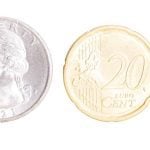CHICAGO, Ill. – A heat wave in the United States corn belt is boosting grain prices, which might provide some relief for taxpayers facing another year of billion-dollar farm aid payments, analysts said last week.
“I think the bottom line is simply that as production prospects are trimmed back by heat and dryness, it should give us higher prices, so deficiency payments should be cut back,” said Dale Gustafson, grain analyst for Salomon Smith Barney.
“I think there will be some significant savings for the taxpayer but I wouldn’t say how much. It all depends on what the weather and the market does,” Gustafson said.
Read Also

VIDEO: Agritechnica Day 4: Robots and more robots, Nexat loves Canada and the trouble with tariffs
Agritechnica Day 4: Robots and more robots, Nexat loves Canada and the trouble with tariffs.
On Aug. 3 the U.S. senate passed a $5.5 billion emergency farm aid package, the fourth straight year extra money has been needed to help farmers due to depressed crop prices. It was signed by president George W. Bush on Aug. 13.
Those aid payments look set to flow to producers, but meanwhile Mother Nature may be working to trim other potential built-in bonuses in the government’s array of supports.
Weather is the key. The Midwest and Plains, which produce most of the American corn, soybeans and wheat, have been seeing record high temperatures and a lack of adequate moisture as corn and soybeans go through their key growth stages since mid-July.
Crop ratings have been falling and yield prospects look more doubtful due to the weather stress on maturing crops. That in turn has lifted grain prices and looks likely to cut the amount of special deficiency payments farmers can collect.
Under the program, the U.S. Department of Agriculture fixes a per-bushel loan rate that essentially puts a floor under grain prices. If local county prices fall below the loan rate, the farmer can give the government the grain, collect the loan rate, and then refuse to repay the loan – leaving the government to own the grain.
Far more often, however, farmers exploit a feature of the program called deficiency payments. These provide a cash bonus but also allow farmers to retain free use of their grain.
Such “loan deficiency payments,” or LDPs, are based on the amount the local cash price is below the loan rate. Claiming this deficiency, however, means farmers cannot later put the grain under loan. It is theirs to use or sell.
Last year, LDPs of $2.26 billion US were claimed on 2.42 billion bushels of soybeans, an average of 93 cents a bushel, according to USDA.
LDPs on corn were claimed on 8.28 billion bu. with payments at $2.36 billion, an average of 29 cents a bu.
But a year ago, prices were lower. Weather presented less threat to crops. Illinois processors were bidding $4.50 a bu. for soybeans versus $5.20 now. Cash corn in southern Iowa went for $1.55 a bu., versus $2.05 now. Hard wheat in Kansas City sold for $2.58 a bu., versus $2.84 now.
“There could be virtually no LDP if the soybean (futures) price goes to $5.50 per bu.,” said Brian Anderson of Anderson Commodities in Shawnee Mission, Kansas.
“Theoretically you’re looking at a possible zero LDP or up to a possible $2 billion total LDP payment for soybeans this year depending on what the weather does over the next three weeks,” Anderson said.
Mark Weidner, grain market analyst for Cargill Investor Services in Chicago said, “I’ve been talking to a few farm groups recently and, as anyone would, they want it both ways. They want the LDP, but if prices go above the loan rate, farmers will have to become better marketers and without the LDP.”














